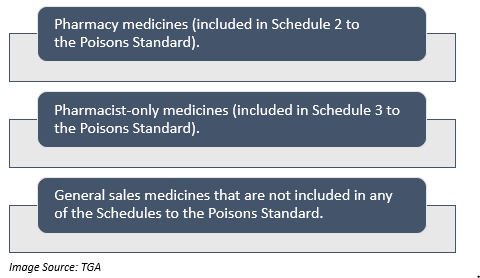What is an over-the-counter (OTC) drug (or medicine)?
Medicines, or drugs, are used to address a variety of health issues, from the management of any disease to pain relief and illness prevention. They are available in the market in the following two forms:
- Prescription drugs (Rx)
- Over-the-counter (OTC) drugs
OTC medications, unlike prescription drugs, do not require any prescription to purchase. They typically treat indications that are easy to self-diagnose, for instance, colds, headaches, and allergies. These drugs are readily available at grocery stores, drug stores, convenience stores and supermarkets.
Examples of OTC drugs include those for cough and cold remedies, sunscreens, anti-fungal treatments, non-prescription analgesics including aspirin and paracetamol, among others.
Prescription drugs, on the other hand, can only be obtained through a prescription from a physician or other licensed medical professional.
How are OTC drugs regulated?
In many countries, OTC medications are selected by a regulatory authority to make sure that the active ingredients in the medicines are safe and effective when used without the intervention of a physician. The regulatory authorities have some set criteria based on which marketing approval is granted to an OTC drug. The authorities examine the manufacturing process and the risks associated with the drug.
Let us discuss regulations for OTC medicines by different countries-
· Regulation in the US
In the US, the manufacture and sale of OTC medications are regulated by the Food and Drug Administration (FDA). The FDA has created the OTC monograph system to review classes of drugs.
OTC drugs are developed under the OTC Monograph Process or through the NDA process. The review of OTC medicines by the FDA is primarily managed by the Center for Drug Evaluation's Office of Drug Evaluation IV.
A sponsor or drug manufacturer seeking to market its OTC drug should submit an application to the Division of Nonprescription Drug Products (DNDP) in the Office of Drug Evaluation IV. DNDP is accountable for OTC drug monographs development.
According to the information provided by the FDA, if any drug cannot conform with the drug monograph, an IND and approved NDA is required before the marketing.
· Regulation in Australia
In Australia, the Therapeutic Goods Administration (TGA) regulates over-the-counter drugs. OTC medicines can be listed on the Australian Register of Therapeutic Goods (ARTG), depending on their risk level associated with making the product available to consumers.
Registered OTC drugs are at lower risk as compared to prescription medicines, but they still need an appropriate level of scrutiny.
In Australia, OTC drugs can be supplied as:

For a drug/medicine to be included in the ARTG, the sponsor is required to submit an application to the TGA. The TGA has developed the Australian Regulatory Guidelines for OTC Medicines (ARGOM) to support sponsors of OTC medications to meet their legislative obligations.
· Regulation in Canada
In Canada, over-the-counter or non-prescription drugs are regulated to make sure that these are safe to use and reduce health risks to Canadians.
Health Canada has established a list of certain non-prescription drugs for distribution as samples named as List D.
To be sold in Canada, OTC drugs require a valid Drug Identification Number also called DIN. The Drug Identification Number shows that the drug has met all the requirements for safety, quality, and efficacy.
Canadian pharmaceutical companies that who are engaged in manufacturing, packaging, label and import of OTC-drugs must have a license for these activities and the required documents and evidence.
· Regulation in the UK
In the UK, the MHRA (Medicines and Healthcare products Regulatory Agency) is the body that is responsible for the medicines licensing.
The OTC drugs manufacture and supply, including traditional herbal medicines, are strictly regulated to make sure all medicines meet the requirements for safety, quality, and efficacy.
In the UK, OTC medicines cover all general sale medicines and pharmacy medicines. OTC medicines are called general sale list (GSL) medicines in the UK, the over the counter medicines term is informal and is not used in medicines regulations of the UK.
Are OTC medicines safe to use?
Even though OTC drugs do not require a prescription, they can still carry a risk. There are chances that OTC drugs may induce side effects, drug interactions, or harm at an excessive dose.
If a person is buying OTC drugs, it is advised to read the “Drug Facts” label that is available on all OTC medications.
The consumers should consult with their physicians, pharmacist, or other healthcare providers if they have additional queries related to use of OTC drug.
In pregnancy, women should ask their doctor before taking any medication, vitamin, or herbal supplement, even if it is an OTC product.
What is a Drug Facts label?
The label for over-the-counter medication is known as a Drug Facts label. The label of OTC drugs is placed at the back and often the sides of the package or box.
The label has important information related to the safety and efficacy of an OTC drug in the same format and order for every medicine.
In the US, every OTC Drug Facts label on store shelves has been approved by the Food and Drug Administration (FDA).
The label informs what the medicine is intended to do with its use, when and how to take it.
Moreover, it also includes who should or should not take medicine. With the Drug Facts label, the information is easier to read and understand.
 Please wait processing your request...
Please wait processing your request...